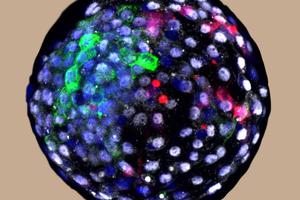Genetically Engineered Chimeras Pose Serious Concerns, Blurring the Lines of Human and Animal
A number of Catholic entities have explained that many moral and legal pitfalls would be involved in federally-funded human-animal chimera research.

WASHINGTON — After the National Institutes of Health proposed federal funding of projects to possibly create a human-animal hybrid, Catholic ethicists voiced serious moral and legal concerns.
“For if one cannot tell to what extent, if any, the resulting organism may have human status or characteristics, it will be impossible to determine what one's moral obligations may be regarding that organism,” Anthony Picarello and Michael Moses, general counsels for the U.S. Conference of Catholic Bishops, wrote in Sept. 2 comments to the National Institutes of Health (NIH) Office of Science Policy.
A month ago, the NIH proposed federally-funded projects to research human/animal chimeras. The projects would involve injecting embryonic stem cells, derived from destroyed human embryos, into animal embryos, with “tremendous potential for disease modeling, drug testing, and perhaps eventual organ transplant,” the NIH proposal stated.
However, it had recognized “ethical and animal welfare concerns” and put a temporary funding ban on such research. The NIH said it would accept public comments on the proposal through September 6.
Federal funding for new research projects involving embryonic stem cells was stopped under the Bush administration, but re-opened under the Obama administration. President Bush had expressed moral concerns about the destruction of human embryos as part of the research.
In comments submitted to NIH, the National Catholic Bioethics Center stated that using stem cells of human embryos for research is wrong because “human beings at these vulnerable stages must be safeguarded, not exploited, in both clinical and research settings.”
The Pontifical Academy for Life stated in 2000 that “on the basis of a complete biological analysis, the living human embryo is - from the moment of the union of the gametes - a human subject with a well-defined identity,” and that as “a human individual it has the right to its own life; and therefore every intervention which is not in favor of the embryo is an act which violates that right.”
“Therefore,” the statement added, “the ablation of the inner cell mass (ICM) of the blastocyst, which critically and irremediably damages the human embryo, curtailing its development, is a gravely immoral act and consequently is gravely illicit.”
However, research to create chimeras causes more ethical problems, the USCCB stated, because these will be creatures “whose very existence blurs the line between humanity and animals such as mice and rats.” Thus, the moral obligations towards such a creature (such as whether or not it is morally licit to destroy it) could be unclear.
Human-animal chimera research can only be acceptable by using “induced pluripotent stem cells” (derived from adult cells) under certain conditions, the National Catholic Bioethics Center explained.
It must not involve “the replication of major pillars of human identity in the “brain systems” of animals, they stated. Also, it cannot result in the growth of human reproductive cells in animals, and if that occurs, the creature — if it is an animal — “should never be permitted to breed,” they added.
“Research must not involve the production or reproductive use of human gametes or their progenitor lineages — the basic building blocks of human reproduction — within animals,” the statement continued.
“Animals in which such lineages might unintentionally arise should never be permitted to breed, and derivation of any gametic cells or their progenitors from such animals or their corpses for reproductive purposes should be specifically prohibited.”
There are also legal concerns about federally-funded chimera research projects, the USCCB comments stated — namely that it violates existing law.
“The Dickey amendment forbids the use of federal funds to create a human embryo for research purposes, or to support any part of a research project in which a human embryo is destroyed, discarded, or subjected to risk of injury or death greater than that permitted for research involving live children in their mother’s wombs,” the comments stated.
They added, “Forbidding the production of mixed human/animal embryos was exactly what Congress intended by this language. NIH’s proposal is contrary to this provision.”
- Keywords:
- adult stem cells
- catholic ethicists voiced serious moral and legal concerns to the national institutes of health proposed federal funding of human-animal hybrid projects.
- chimeras
- human embryonic stem cells
- human embryonic stem-cell research
- human-animal chimeras
- human-animal hybrids
















